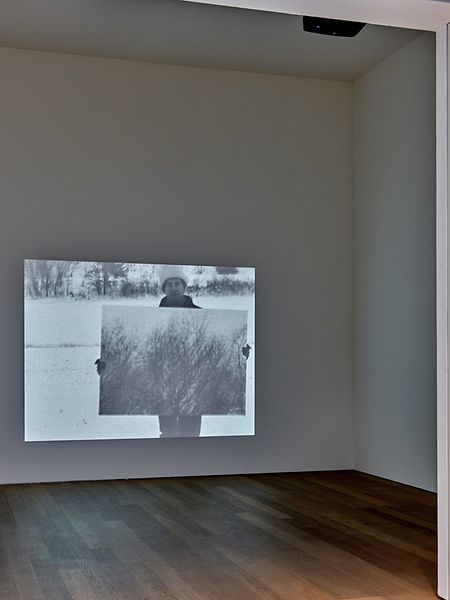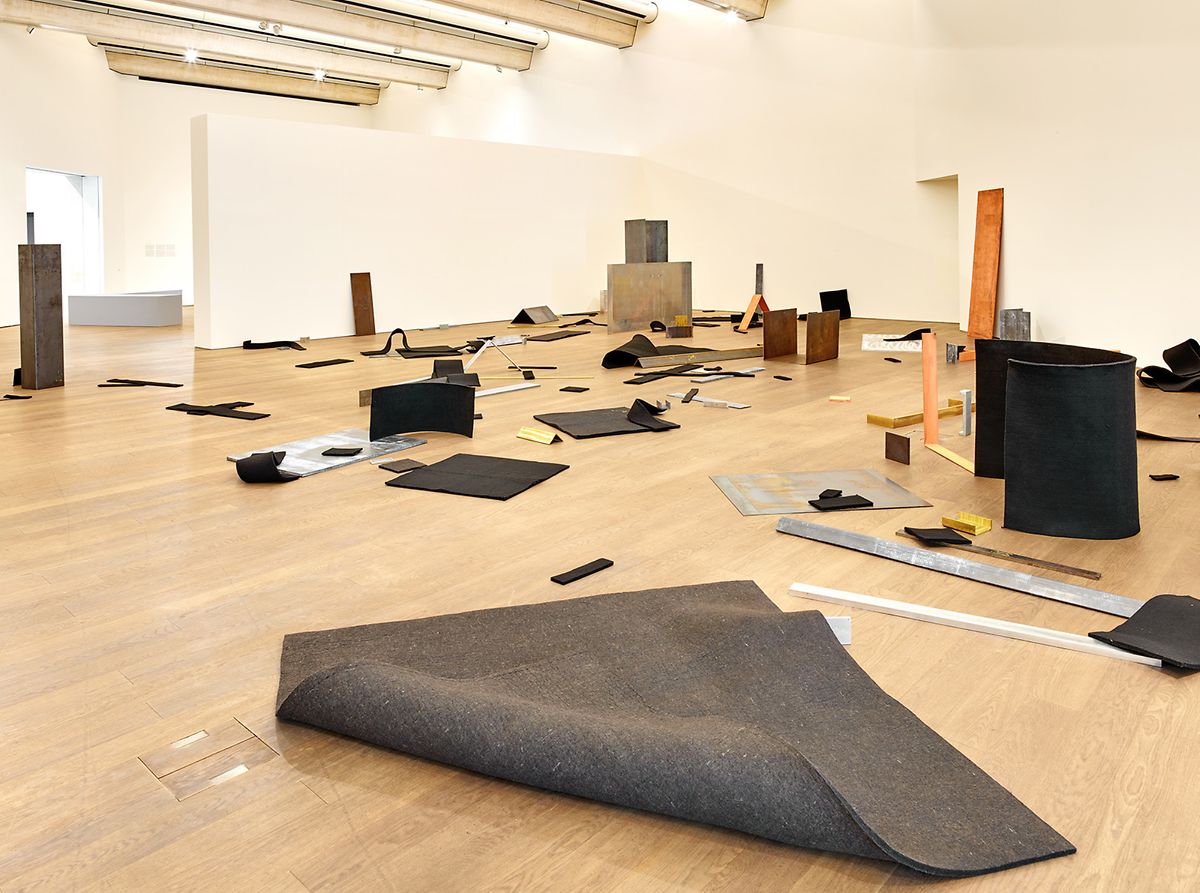Robert Morris Show for the Museum of Modern Art in Luxembourg
Mudam hosts 'a series of investigations' in 1960s American art
Mudam hosts 'a series of investigations' in 1960s American art
4 min. 22.02.2020
Exhibition of influential U.s. sculptor Robert Morris invites audiences to reflect on the relationship between artist, art and perspective

Robert Morris's Portland Mirrors on display at Mudam Photo: Mudam Luxembourg
Grand duchy of luxembourg'southward gimmicky art museum Mudam hosts a remarkable exhibition of 1 of the most influential and controversial American artists of the postwar menses, Robert Morris, curated past a close collaborator of the artist who died in 2018.
The Perceiving Body demonstrates the radical new ideas that underlie Morris's early works from the 1960s and 1970s. The sculptor, conceptual creative person and writer, born in 1931, was crucial in the development of minimalism, land-art and process fine art in the 1960s.
During this period, conceptual artists had already begun emphasizing the core idea of an artwork over aesthetic or technical concerns. The forefather of conceptual fine art, Marcel Duchamp, who commencement introduced ordinary, functional, manufactured, readymade objects as art, was a big inspiration for Morris.
The exhibition at Mudam has no chronological narrative or fixed exhibition route. It has no beginning and no end. Instead curator Jeffrey Weiss devised a web of possibilities where the viewer encounters the key principles from this art period with every motility. In harmony with the era, Weiss's curation can exist divers every bit "minimalist", designing each room similar a basic exercise to immerse the viewer in an essential idea and so allowing a chain of associations throughout the show.
Morris called his art "a series of investigations"; Weiss conceived a new investigation on how Morris'south language from the 1960s expand and transform the current dialogue fifty to sixty years later.
In minimalist sculpture, the relationship of the artwork to the space around it gained importance. The personal reaction of the audience played a critical role and unlike traditional sculpture, artists used industrial and prefabricated materials, encouraging viewers to experience the piece of work in terms of its scale, textile, weight and appearance of light.
A core piece of the exhibition, Portland Mirrors, invites the audition to witness the space reflections created by 4 mirrors, emphasizing the essential role of their "perceiving torso" in the exhibition.

The 1969 pic Mirrors offers the only view of the artist himself Photo: Mudam Luxembourg
"Perspective is its ain construct. As a system it has shaped how we run into and so many things that we tend to take it for granted," said Weiss about the work. "You lot see yourself occupying the intersection of the two systems, you are either in the mirror or non. Sometimes you expect a reflection, just you don't see one. What's destabilizing is the space of work with respect to the mirrors is a nowhere space."
The creative person's role in the exhibition tin can be perceived in this surface area of intersection where he is simultaneously present and absent. His presence is felt in ane room and elusive in the side by side i.
In only one room do visitors encounter an paradigm of the creative person towards the end of a 8.5-minute picture. The 1969-dated movie Mirror not only brings back the device of the mirror (a key chemical element in this period) merely also introduces the artist while he is performing to the camera.
During his career, Morris contributed to the evolution of procedure fine art, which focused on the process of making art, through irregular arrangements, piling and hanging. Improvisation, transience and non-traditional materials were common.
The installation Scatter Piece demonstrates Morris's performative side and his application of "adventure operations" which he borrowed from John Cage, the 20th century avant-garde composer who after turned to visual art.
Chance operations removed the choice of the creative person and incorporated random chance to art production. Simple procedures similar rolling dice or choosing numbers from a telephone volume assigned the textile and position of each piece in Morris'due south installation.
The viewer is encouraged to circulate this new form of sculpture, every bit if looking at the ruins of an object distributed across the room, instead of a monolithic ane. The artist'due south product process is fabricated transparent and his presence elusive, just like in the video Mirror.

Scatter Pieces shows Morris'due south more than peformative side Photo: Mudam Luxembourg
Equally a theorist and an artist, Morris challenged the existing norms of making and viewing art. Minimalist and conceptual artists criticized the elitist art world, expressed dissatisfaction with social structures and government policies. As a part of the protests against the Vietnam War in the US, Morris resisted the electric current ideologies in art (and in club) by abandoning rules and exploring bold possibilities.
Although he is often associated with minimalism, experimenting with ideas inside the context of operation, dance and theater was a crucial part of Morris's practice. He took part in the Judson Dance Theater (Judson Memorial Church, New York Metropolis, 1962-1964) which rejected modernistic dance theory. Morris, who possibly shifted the form of American art history, never confined himself within one subject area.
The curator of the exhibition at Mudam, Jeffrey Weiss, worked with the artist closely until the creative person's decease in 2018. Weiss authored the meticulous volume Robert Morris: Object Sculpture, 1960–1965 (2014). While Weiss was the Senior Curator at the Guggenheim Museum in New York between 2010 and 2018, he conducted several interviews with Morris for a study known equally the Panza Collection Initiative.
In collaboration with the conservator Francesca Esmay, Weiss addressed questions relating to imperceptible and fabrication-based art produced in the 1960s and 1970s. The transient quality of some of Morris's installations merely rendered his ideological heritage more resilient.
Weiss stressed that the experimental idea of aesthetics in the form of "what if" propositions, every bit they are evoked by the selected Morris works on display, tin can provide slap-up insight fifty-fifty today. The Perceiving Torso is on view at Mudam until 26 Apr 2020.
Get the Grand duchy of luxembourg Times delivered to your inbox twice a 24-hour interval. Sign upward for your gratis newsletters here.
Source: https://www.luxtimes.lu/en/culture/mudam-hosts-a-series-of-investigations-in-1960s-american-art-602d6e3fde135b9236b76757